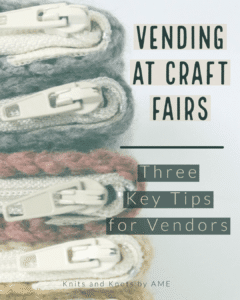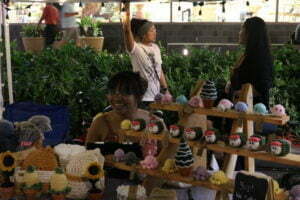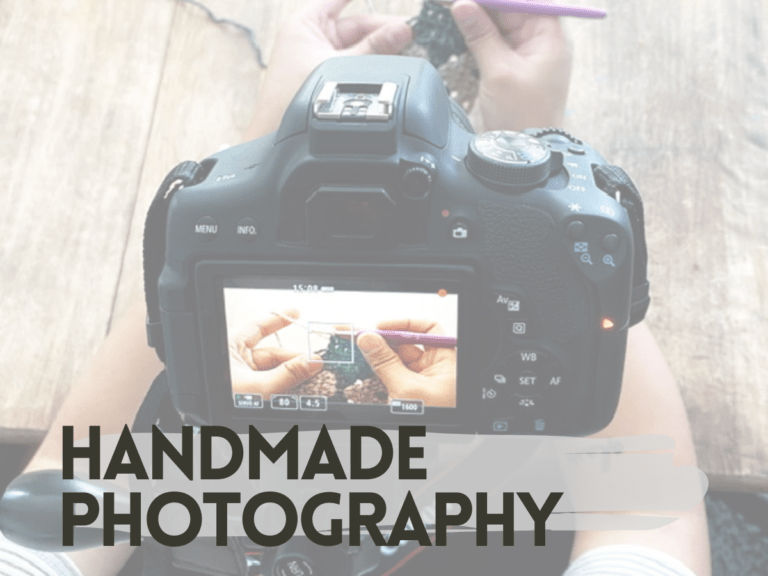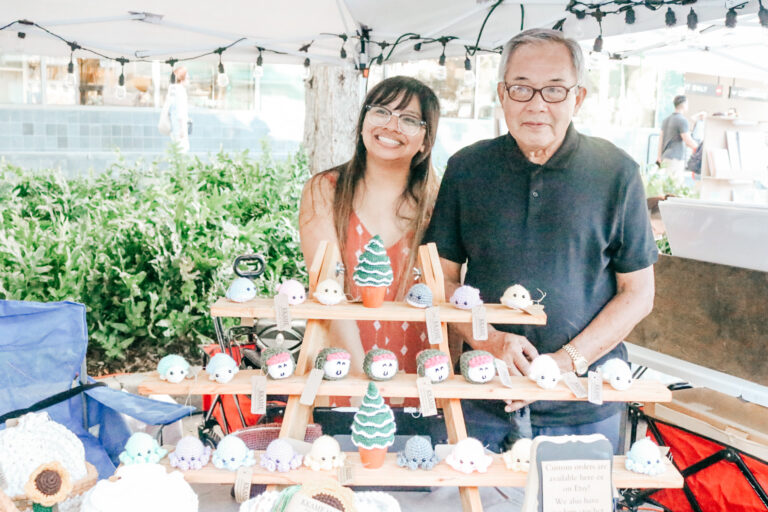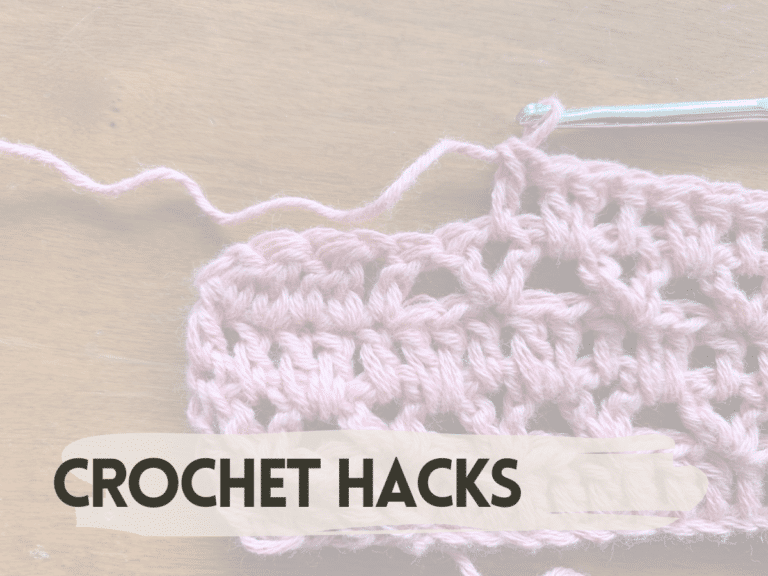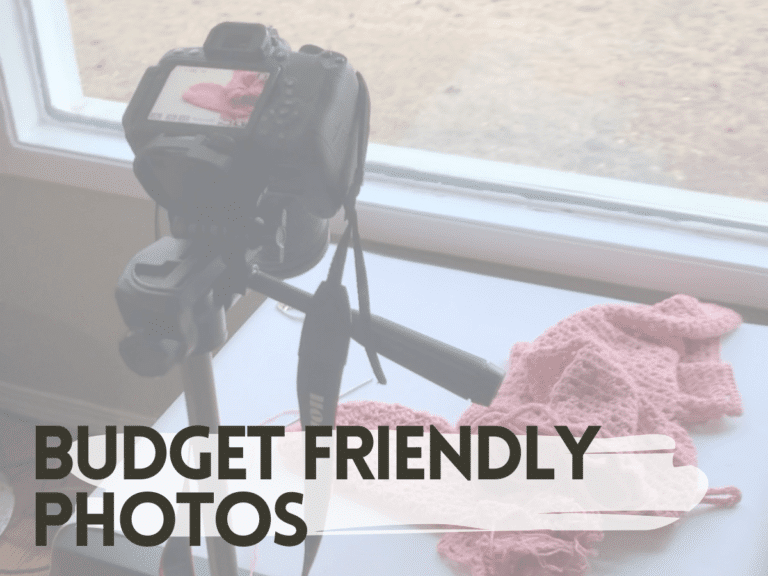Vending at a Craft Fair
A craft fair is a place where creatives and entrepreneurs share what their business offers to a crowd. A variety of crafts can be found at a craft fair and a great variety of vendors depending on the theme of the show. In Hawaii, craft fairs focus heavily on food (hey! can I get a hell yeah?!) and serve more of an event to eat and connect with one another filled surrounded by good vibes and awesome music.
Okay, this is turning into a post about Hawaii fairs. Let’s save that for next time and get back to the topic (facepalm)
Are you trying to build a crochet business? Check out the link below to learn everything you need to know to start a crochet business in 2023.
Just starting out? Here are Crochet Items that Sell best in 2022.
Vending at craft fairs is a common milestone and endeavor for most small businesses and creative entrepreneurs. It is something I look forward to at this stage of my business and the main source of profit at the moment.
During my first show I had zero knowledge what to expect and how to prepare. I spent endless hours Google-ing and on Pinterest just thinking of these things. Can I get an AMEN if you resonate with that experience?! How many hours do you spend just trying to get all your ducks in a row? Pinterest is such a great tool for creatives. I mean, it has an endless library of resources and basically has answers to every question thinkable.
Answers… That’s right. Plural. And with all great things, there comes a downfall. In Google and Pinterests case, TOO MANY answers seemed to be e problem I kept running into. How I wish there was just one resource with everything that I needed, that would have saved me many hours of tossing and turning in bed before the event.
Here I have for you tips and a FREE Vendor Checklist to hold your hand through your first (or second, maybe even fifth) show… ’cause come on, we could all use the help right?
Three Key Tips for Craft Fair Vendors
Become your company
Here comes what I coined as THE 4 P’s. Know your purpose, your process, and your products and prices. Number one thing as a vendor is to perfect your knowledge on your company. This also includes educating helpers during events as well. Guys. You need to know your company. Keep in mind what drives you. If you are in the craft or creative business I can guarantee you someone is going to ask you “so what made you want to do this?” or something along this line. Express your passion and not just come off like you are in it for a quick buck.
People like to know that you know what you are doing. They want to know they are spending their money on a person and not just an item. Have you ever heard the saying “buying the brand”? In running a small business you want to become the brand. Be the face of your own company. No one knows your company more than yourself.
Lastly, you need to know your products. What problem are they solving and function do they serve? What makes your product different from the one around the corner? Also, make sure you know your prices. Have you ever been in a store and get so frustrated with the sales person? I bet during this event you might have muttered something along the lines of “geez doesn’t he work here?”. Yeah. You know.
Know your audience in the craft fair
Now we talk about your audience. Knowing your audience is the main thing that will drive you to sales. Creating a great costumer experience at crafts fairs is what is needed and what better way to do that than story telling. Yes, you heard it, tell a story! Talk to your potential customers about your creative process. People love to hear the story behind things like what inspired you, what materials were used, how you landed at that particular event, and so on. My creative process includes binge watching shows as I make, and guess what? Our customers have Netflix too! Finding something in common with your audience can help create a great vendor-customer relationship and remind them that you are human, you are just like them, and you are just trying to pay bills as well.
For me I immediately find things that my customer and I have in common, being a designer it is mostly style. I would compliment their outfits, let them know I know where they got it, praise them for having great taste.. If they begin conversation I allow them to lead fuel the conversation with what they are interested in. Your son loves dinosaurs? Well wow! So does my nephew! Simple conversations like these go a long way.
Another thing that would help gaining trust with potential buyers during craft fairs is, and it may seem like a backwards step, referring to other small businesses. Now you might be asking me, WHY ABIGAIL?! But the truth is, if you are constantly selling yourself short and trying so hard to make a sale work, it just shows that you are in it for yourself. By referring to other small businesses you show the customer that you have their best interest in mind. Showing authentic and genuine care for your customers hard earned dollar grants mutual respect. And trust me, they are most likely going to remember you because you had them in mind AND you created a great experience through story telling and rapport building.
Prepare your craft fair Booth
Treat your booth like your mini shop. Well I guess that is exactly what it actually is. Think of what kind of shop you would be attracted to and design your craft fair booth in that aesthetic. I had comments like “you should offer (this) color” however in the back of my mind I always like to stay true to my own aesthetic. Remember, you are your company. And those people who try to tell you otherwise, well guess what, they are not your ideal customer.
A few things I picked up while selling at fairs include booth display, booth light, and booth depth.
Display
Your craft fair booth display should not, I repeat, SHOULD NOT have everything and everything available. You want to limit what you have on your table and restock as necessary. Booths are generally small so going up is a good way to maximize your space. This is where racks and other display items come in. Remember, less is key.
Lighting
You want to have a welcoming light, nothing to sharp nor too dim. The right type of light would be just enough for your audience to see your products but not as bright that will make them feel uncomfortable in your booth. This also depends on what your products are which can influence the type of lights you choose. Have too little light will make you seem invisible during a night market. I use patio string lights.
Depth
Lastly, booth depth. Now this is something I just put together and realized recently. While observing consumer behavior in relation to booth set up I correlated less sales for set ups which require people to walk in. This type of set up may feel and look better however it is actually driving sales away!
Which in retrospect makes a lot of sense. People do not like to be crammed in small spaces. Here is the same craft fair booth set up in a different position. Here it makes more sense because now all your products are visible from the front of your shop AND the entire walkway now becomes a part of your booths “space”.
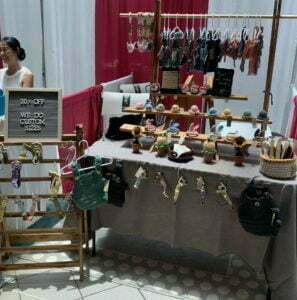
In return, people tend to buy more when items are “in your face”. Try to position your table towards the front area of your booth and have your display take up less space as possible.
Click here for a checklist for all the things you should have available for your first show

